Winter in Phoenix! Temperate weather, crisp skies, green golf courses! The life!
And then, two minutes later, you might wonder what one actually does in Phoenix.
Other than picking between the Chandler or Scottsdale Mall. Or daytime margaritas on the patio of some divey Mexican restaurant. Or leaving the city entirely, on the way to Sedona, Tucson, or the Grand Canyon.
What does Phoenix have to offer?
Well, a lot! Winter is time to head outdoors in Phoenix, without tempting serious sun burns or heat stroke. Here are my five Wintertime fun ideas in the Valley of the Sun.
1. Las Noches de las Luminarias at the Desert Botanical Garden
Every December, the Phoenix Desert Botanical Garden opens its doors for Las Noches de las Luminarias. Paved trails throughout the Botanical Garden are lined in what must be thousands of luminaries (paper bags with tea lights inside). The effect is magical.
In the inky desert sky, the luminaries are a tantalizing guide through the desert foliage, offering glimpses of looming Saguaros or Organ Pipe cactii. The Botanical Garden plants musicians throughout the desert forest — ranging from classical to folk, jazz to bluegrass — leaving you to stumble onto seemingly impromptu performances.
If that doesn’t do it for you, the Botanical Garden has two live music stages with room to dance or lounge, with coffee and wine. It’s like a wedding reception, amidst beautiful and rare fauna.
You must buy tickets in advance, as the event sells out. The Botanical Garden does sell meal tickets for its indoor buffet, but I would recommend a late lunch/early dinner at one of Phoenix’s many fantastic restaurants.
2. Search for Gold in the Superstition Mountains
Ready to take part in a time-honored Phoenix tradition? Because it’s time to search for gold in them there hills. Pack up some water, snacks, and a baseball cap and hike the 4-mile Lost Dutchman Trail at the base of the Superstition Mountains. Can you identify Weever’s Needle? The rock that looks like a person’s face? Does the setting sun point to the gold?
The Spanish sure nailed it when they named this mountain range the Sierra de la Encantacion. Or, “the conjuring mountains.” The relevant myth today is the Legend of the Lost Dutchman. A German, Jacob Waltz, settled in Arizona in the 1860s. (This might be the only part of the story that’s true, and it’s already pretty unbelievable.)
Herr Waltz found gold one day in the Superstition Mountains, either buried there by the Spanish or in an open gold mine, and in true legend form, left it right where it was.
Or, better yet, he was chased off by roving Spanish soldiers! Camped out in the Superstition’s caves, protecting their gold from any would-be prospector! He bolted out of the mine in a thunder of gunpowder and streaming bullets! He hid whatever gold he had grabbed in a nearby ditch, and made his way back to town empty handed.
Herr Waltz had an even greater flair for the dramatic, though. After floods ravaged his farm, he caught pneumonia. In the care of one Julia Thomas (occupation unknown), his health steadily declined.
In a death bed confession, he told her how to find the gold mine:
A short climb from the mine, you can see Weever’s Needle, but from the Needle, you can’t see the mine.
(gasp)
You can see the Military Trail from the mine, but you can’t see the mine from the Military Trail.
(gasp)
You have to crawl into a hole to see the gold.
(gasp)
Near the mine is a rock shaped like a person’s face.
(last dying breath)
The setting sun would shine on the entrance to..the..mine…
(And SCENE)
Right. So. A riddling German on a death bed. What luck.
A legend would be nothing without a mysterious update. In June 1931, Adolph Ruth from Washington, DC decided to take a turn seeking out the Lost Dutchman’s gold. His skull was found six months later…with two bullet holes in it. Three people died in 2010 (yep, 2010) searching for the gold. In case you thought this was a cold case.
Dave and I, two pasty vacationers in jeans and Converse, set out for Lost Dutchman State Park last week to see if we could put our two minds together and get us some gold. The Arizona State Park website clearly states that “Serious Prospecting is Not Permitted at Lost Dutchman State Park”. Which, as I read it, means non-serious prospecting is totally legit.
We began our ascent, following the promisingly-named Treasure Loop Trail. The terrain here is downright Martian. Aquatic fossils have been found in the Phoenix Basin – sharks, clams, oysters—dating back 500 million years. About 40 million years ago, erupting volcanoes created the Superstitions and other Phoenix mountain chains. The California fault lines pulled the molten basin apart, like a caramel left out in the sun. Wind then swept sand and debris off Superstition Mountain, filling in the molten crevices and creating the level, flat terrain of modern day Phoenix. This geologic past is the only way to make sense of the weirdo Superstition landscape.
Time for the first clue: “A short climb from the mine, you could see Weaver’s Needle. But from the needle, you couldn’t see the mine.”
Dave, boy wonder that he is, hypothesized that this could be because the mine is at a higher elevation than the needle – a person could stand at the mine and look down at the needle. A person standing at the needle would only see the edge of a cliff, not the mine entrance. Brilliant, right? And it only took him a minute. This theory also works for the military trail clue.
As we neared Superstition Mountain, what once appeared to be a shear, sandstone façade revealed itself to be a series of overlapping, red spires in the late afternoon sun.
The next clue –crawling into the hole –made obvious sense, so we skipped right by it.
Next up was the rock shaped like a person’s face. We didn’t see anything humanoid, but I did see a rock formation that looked like a puppy hovering over a bone. The spires, if you squinted, looked a bit Easter Island-esque. The gold, it could be anywhere.
The last clue, that the setting sun would shine on the mine, wouldn’t do at all. The sun sets differently every day of the year, higher or lower on the horizon depending on the season. I’d make a joke about looking into the year and month that the Lost Dutchman went on his hike and doing a shadow analysis, but I’m sure lots of people have actually done just that.
We packed ourselves back into our car, a bit sun dazed and hungry. No gold in sight. Next time, we’re going on the Flatiron hike. No one said finding the lost gold would be easy.
3. Check out Goldfield Ghost Town
If a 4-mile trek through the desert doesn’t sound like much fun, head over to family-friendly and historic Goldfield. The only ghost town in the Phoenix metro area, Goldfield is a collection of 15 stick frame and Victorian, Bordello-style wood buildings, including a train depot, livery, saloon, church, and gold mine. It’s a tourist attraction, so the buildings actually house gift shops, cowboy hat shops, museums, and snack shops.
History
A sign at the Goldfield Train Depot explains it all: “In Goldfield in 1897…nothing happened.” Following rumors of gold in the Superstitions, Goldfield boomed to 1,500 people at the end of the 19th century. Only a pithy amount of gold was ever found, and so it went bust five years later as prospectors moved on to other cities.
I have no idea how anyone could survive a couple days here, let alone years. The landscape is forbidding – you have the Saguaros and Chollas, in addition to low lying prickly scrub that blanket the rest of the desert floor. Palo Verdes, pretty to look at, are mean little buggers if you knock into one. Then, there are the tarantulas, scorpions, and Gila monsters. And 115 degree heat and relentless sun.
If gold was their get-rich-quick plan, the Superstitions sure made them work for it.
Goldfield is free to roam around in, but you’ll have to pay small admission fees for its cooler attractions. You can ride the Superstition Railroad, pan for gold, take in the Mystery Spot, and go down into the mine.
We opted for a ride on the Superstition Railroad ($8 adults/ $7 seniors/ $5 children 5-12), a loop that takes you into the desert for views of the Superstition Mountains, Goldfield, and gold and copper mines.
The train ride might be too advanced for younger children; our 3 yr old niece had trouble seeing over the railing and didn’t follow a word of the conductor’s narration. The ride is still fun – trains are ALWAYS fun – but may be more suited for older children.
We also paid the $3 for the Reptile Exhibit, a one room collection of stacked glass holding cells featuring scorpions, Gila monsters, and rattlesnakes. Desert-native Dave couldn’t get over the variety – at least three different subspecies of rattlesnake, two Gila monsters, a wall of tarantulas.
On the hour, the “residents” of Goldfield stage a (seemingly improvised) shoot out. It was laugh-out-loud funny. Shootout humor has a long history in Arizona, probably dating back to the actual gun fights that spawned this whole industry.
At a time when death was commonplace, through accident, murder, or illness, the pioneers seemed to comfort themselves with pithy, droll rhymes explaining the cause of death. Like the witty tombstones of Tombstone, AZ:
“Here lies Lester Moore. Four slugs from a forty four. No Les. No More.”
“Here lies Butch. We planted him raw. He was quick on the trigger. But slow on the draw.”
The shoot out actors played around with the same morbid humor, breezy accidental killings, and double entendres. I never knew guns and death could be so funny.
Goldfield also houses a few snack bars and eateries, notably The Saloon. We wanted a quick bite, and so we went to the Blue Nugget for cookies and coffee on the shaded back porch with a view of Superstition Mountain.
4. Vintage Crawl
So, I was wrong when I said that the Mission is where every discarded rattan chair, polyblend blouse, and leisure suit ends up, on its way to a new forever home. They actually all go to Phoenix. Specifically, the 2 mile square block north of downtown Phoenix.
The region is a grid of 100 foot wide, six-lane thoroughfares, lined with sun-bleached strip malls and gas stations. It can be very stressful to drive around, for the uninitiated and pedestrian. But! Things get very funky once you turn into those lots.
The highlight – the filet – is Red Modern Furniture, on East Camelback Road between North Central Avenue and North 7th Street. Housed in what looks like a former atomic-age car dealership, Red Modern is a two-floor, glass walled warehouse of unique furniture from 1950’s through 1970’s. The owner mentioned that he personally selects the furniture on his trips to Denmark, and it shows. His collection included a slew of original Hans Wegner, Jens Risom, and Adrian Pearsall pieces that I’d never seen before, all in beautiful condition. Prepare yourself for the price tag, though. This beauty doesn’t come cheap.
(If you really go on this crawl, promise me that you’ll have lunch at Tacos Atoyac, on the corner of West Glendale and North 19th Avenue. Fine, it’s housed between Chilo’s Tire Shop and Smoke N’ Toke Smoke Shop, and just down the strip mall from Weapon Works, but I promise you, it is FANTASTIC. Order the fish tacos, the carne asada, and a quesadilla. And a Bavarian cream and white chocolate churro to go.)
North 7th Avenue between West Camelback and West Indian School Road is lined with vintage stores, with an off shoot on West Hazelwood. There is a shop for any vintage or antique taste: teak Mid-Century Modern (Phoenix Metro Retro), French country (Paris Envy), Shabby Chic (Melrose Vintage), psychedelic 60s verging on campy 70s(Retro Ranch), and kitschy 50s (Go-Kat-Go). There are at least five other shops on this stretch.
Also on this block is the Fry Bread House, which you should really go to if you don’t go to Tacos Atoyac.
On North 16th Street between East Osborn Street and East Indian School Road, you have Universal Furnishings and Offerings, which kind of felt like walking through a psychedelic 60’s vintage shop while actually on shrooms. Totally weird, but everything was in great condition.
5. Take in a Desert Sunset
The nice thing about being in Phoenix in Winter is the early sunset. With the sun setting around 5 or 5:30pm, you have time to drive out into the open desert (pick a direction — north, south, east or west –then drive) and then get back into town for dinner.
This is either remarkably romantic or efficient, depending on whom you’re meeting for dinner.
Desert sunsets are incredible. First, you have the 360 degree view, which means that the sunset is happening all around you, enveloping you.
First comes the low sun, setting the red, volcanic mountains on fire. Then, you watch the sun slowly become a hemisphere, as the sky turns a cool lavender. Then the after glow, the 20 minutes or so after the sunset as the sky turns into a veritable dome of pink, purple, and a glowing orange.
All before dinner!







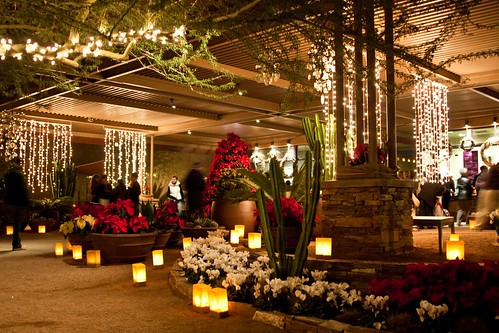

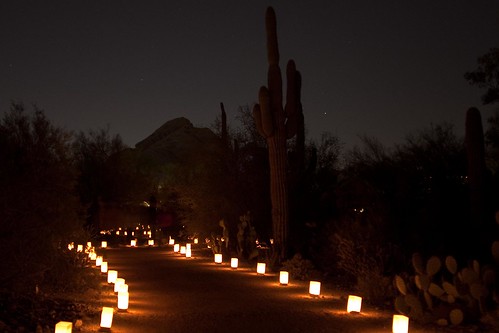
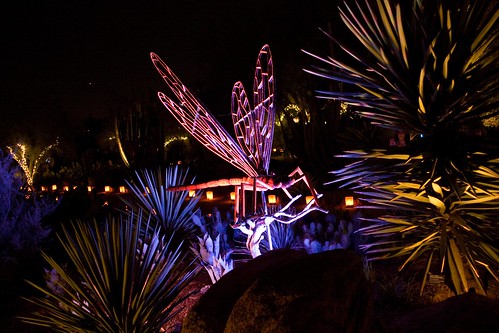
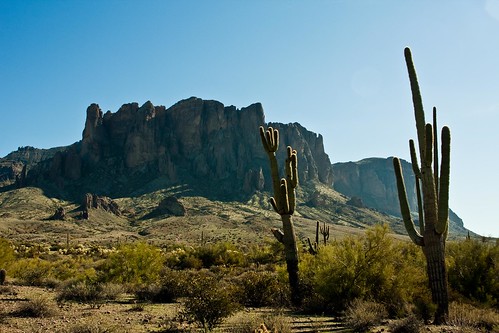


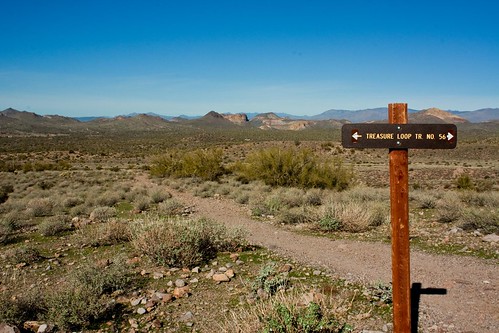
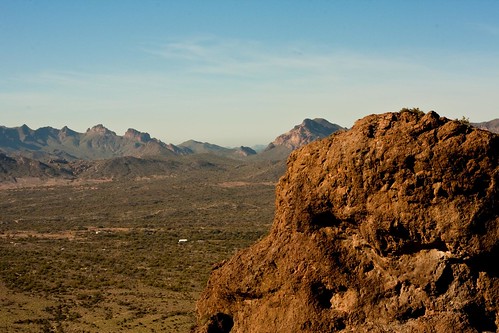
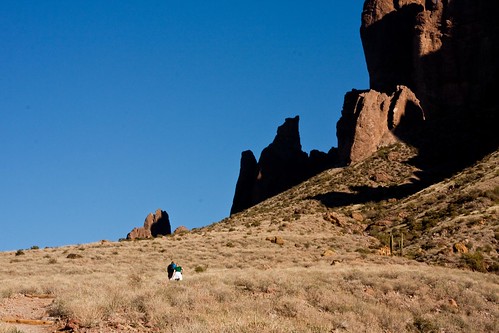
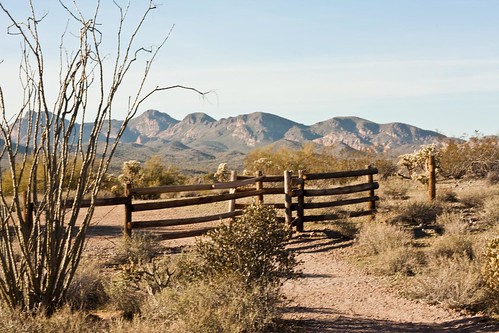
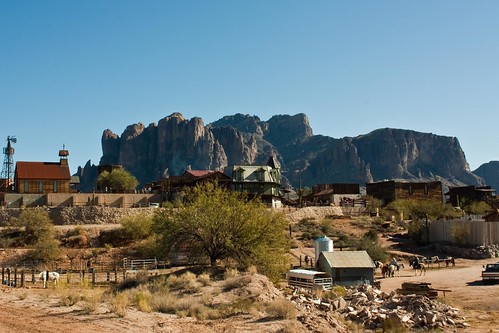
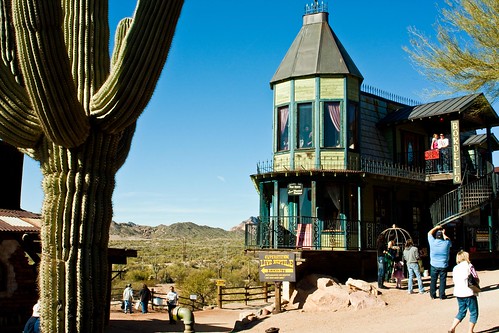
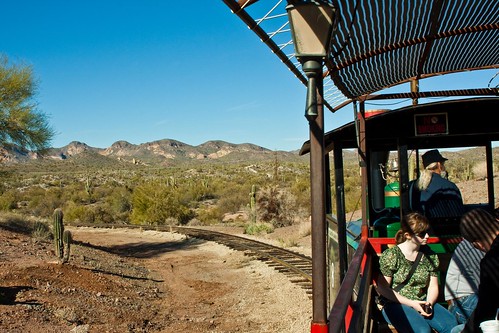
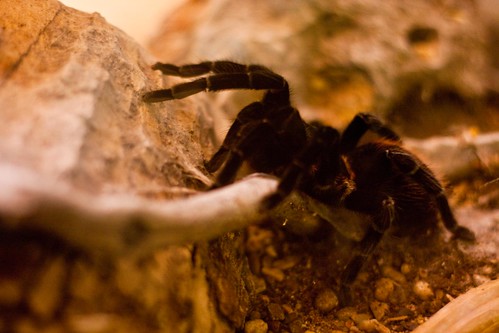
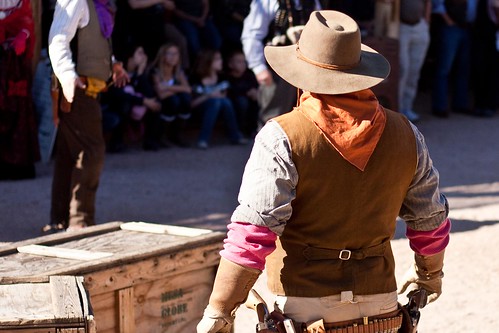
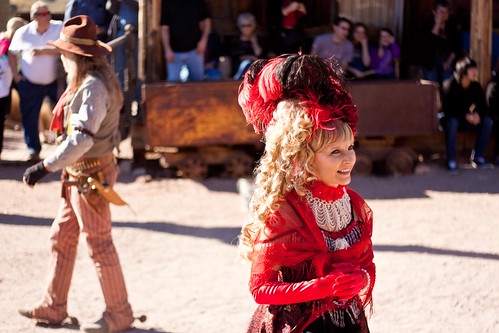
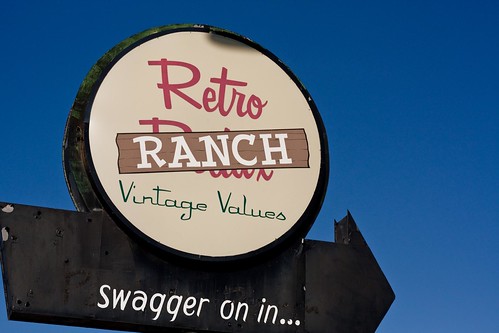

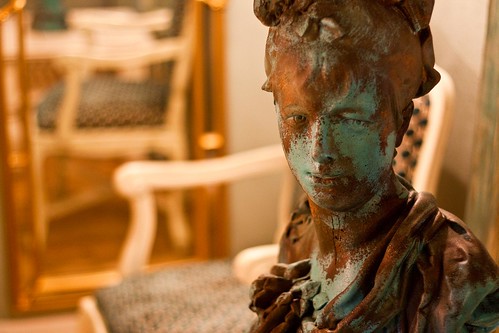
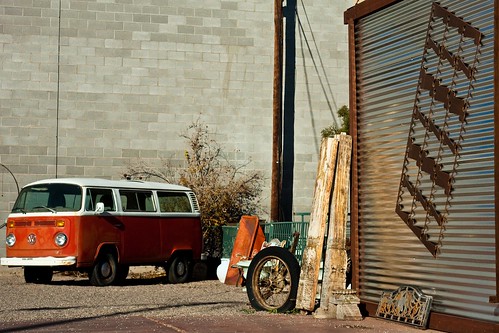
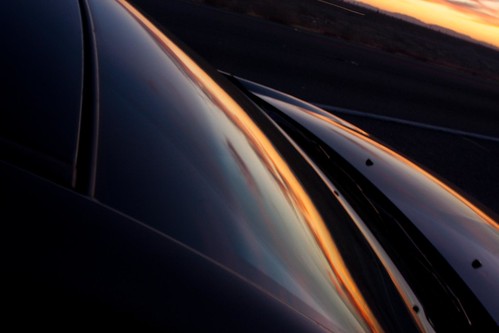
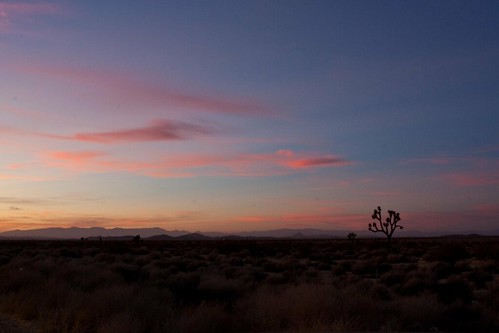

Friday Finds: Winter Getaways | Other | Diary of The Purple Passport
[…] Desert sunsets and vintage crawls in sunny Phoenix. [Far Out City] […]
1/20/2012 at 5:49 am